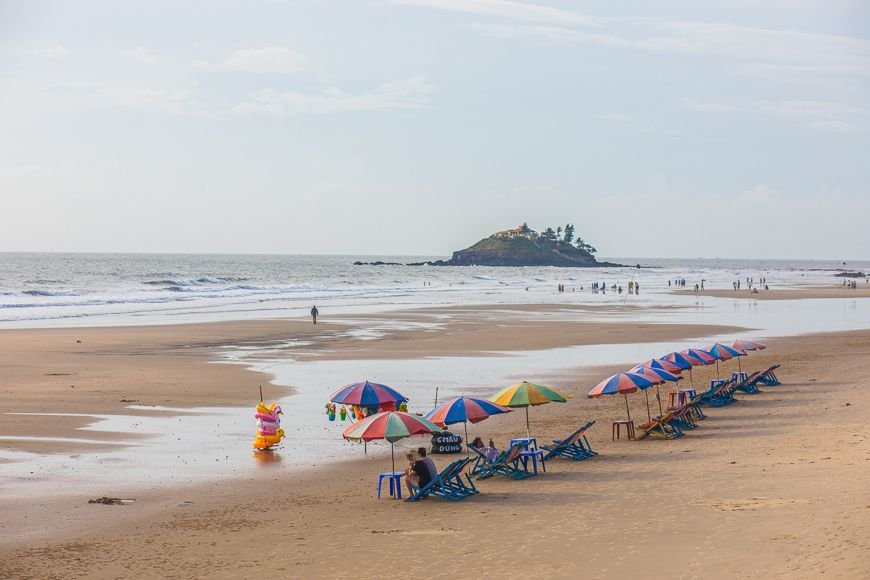Asia Travel Pulse
AI, Mobile-First Platforms, and Digital Payments Transform Gen Z Travel in India, China, Japan, Thailand, and Singapore, Driving Spontaneous Bookings and Personalized Experiences: Here’s More About The Emerging Trend Of Asian Countries

Published on
August 9, 2025 |
The tourism industry across Asia is undergoing a significant transformation, thanks to the rapid adoption of artificial intelligence (AI), mobile-first platforms, and digital payments. These technological advancements are especially noticeable in the travel behavior of younger generations, particularly Gen Z. The impact of AI and digital tools is no longer confined to just a few countries but is sweeping through major Asian markets such as India, China, Japan, Thailand, and Singapore.
This shift is prompting travel companies to rethink their approaches, pushing for speed, flexibility, and personalized experiences that meet the expectations of today’s tech-savvy travelers. As a result, these countries are seeing an increase in spontaneous travel bookings, flexible payment methods, and highly curated travel suggestions—all made possible by the intersection of technology and consumer demand.
The Dominance of Gen Z in Asian Travel Markets
Gen Z travelers, born between the mid-1990s and early 2010s, are reshaping the way travel is consumed across Asia. This generation, highly familiar with mobile devices and digital platforms, expects more than just traditional travel experiences. They demand instant bookings, personalized suggestions, and seamless mobile experiences—especially as their travel habits tend to be more spontaneous than those of older generations.
In countries like India, China, Japan, Thailand, and Singapore, Gen Z’s influence is becoming more pronounced. For instance, in India, nearly 40% of Gen Z travelers make bookings just 3-5 days before departure. This trend is mirrored in other parts of Asia, where younger travelers are increasingly turning to AI-powered tools to help plan their trips, choose activities, and book accommodations on the go.
How AI and Digital Payments are Shaping the Travel Experience
AI’s impact on travel in Asia is multifaceted. From offering personalized itineraries to recommending activities based on past trips, AI tools are transforming how travelers explore destinations. Whether it’s recommending destinations, activities, or tailored experiences, AI is providing travelers with solutions that feel intuitively designed for their preferences.
In addition to AI, digital payment systems, particularly mobile wallets, UPI (Unified Payments Interface), and EMIs (Equated Monthly Installments), are streamlining the booking process. These systems enable travelers to make payments instantly or pay in installments, giving them more freedom to make spontaneous travel decisions without the burden of upfront costs.
For example, UPI is widely used in India, while mobile wallets like Alipay and WeChat Pay dominate in China. Similarly, in Japan, Thailand, and Singapore, digital payment systems are increasingly being integrated into travel platforms, making it easier for travelers to book flights, accommodations, and activities without the hassle of currency exchange or complex payment methods.
These innovations have become crucial for appealing to younger travelers who expect efficiency, flexibility, and quick solutions. The availability of multiple payment options ensures that booking a trip—whether it’s a last-minute getaway or a long-planned vacation—can be done with ease, boosting the overall travel experience.
The Shift Toward Personalized and Curated Travel
As AI continues to evolve, the focus has shifted from generic, one-size-fits-all travel packages to highly personalized, curated travel experiences. In countries like Japan and Singapore, AI is used to provide activity suggestions that align with a traveler’s specific interests, such as culinary experiences, cultural tours, or adventure sports.
The use of AI in personalized itineraries is gaining ground in Thailand, where platforms suggest tailor-made holiday packages based on real-time trends, weather conditions, and even user behavior. Similarly, in China, travelers can use AI tools to not only book flights but also select unique experiences, such as off-the-beaten-path destinations or local experiences that align with their interests.
For Gen Z travelers in Asia, personalization is key. They are looking for experiences that are unique, dynamic, and responsive to their needs. With the help of AI, travel companies in India, China, Japan, Thailand, and Singapore can now provide suggestions that feel highly relevant, whether it’s a hidden gem of a hotel or an exciting activity that matches their adventure-filled vacation style.
The Impact of AI and Digital Tools on Travel Companies
Travel companies across Asia are increasingly turning to AI and mobile-first platforms to stay ahead of the competition. In countries like India and China, the shift toward AI-driven platforms is helping travel agencies offer more personalized recommendations, manage last-minute bookings, and streamline customer service.
For instance, AI-powered chatbots and virtual assistants are becoming ubiquitous, handling everything from providing flight updates to assisting with booking changes. These systems can quickly adapt to last-minute requests, an important feature for spontaneous travelers, and are helping companies enhance their customer service operations.
As mobile-first platforms continue to dominate, companies are moving away from traditional desktop-based systems. Instead, they are focusing on creating seamless mobile experiences that allow travelers to book, plan, and manage their trips directly from their smartphones. This mobile-first approach has been especially successful in countries like Japan and Thailand, where mobile app usage is widespread, and consumers are comfortable making bookings and payments on the go.
Spontaneous Travel: The Role of Digital Payments
One of the most significant outcomes of the digital payment revolution in Asia is the rise of spontaneous travel. In the past, booking a last-minute trip often involved challenges such as securing accommodations, finding affordable transportation, or dealing with limited payment options.
With the integration of digital payment systems like UPI in India, WeChat Pay and Alipay in China, and mobile wallets in Thailand and Singapore, these challenges are being alleviated. Travelers can now make instant payments without worrying about cash or complex transaction methods, allowing them to act quickly and book travel on a whim.
This ability to pay immediately or over time via EMI options has made it easier for travelers, especially younger generations, to make spontaneous travel decisions. For example, in India, UPI has become the preferred payment method for many travelers, particularly Gen Z, because of its simplicity and ease of use. Similarly, in China and Japan, mobile wallet payments are now deeply embedded in the travel ecosystem, making spontaneous booking a seamless experience.
The flexibility offered by these digital payments has not only fueled spontaneous travel but also contributed to the overall growth of the travel industry in Asia.
The Future of Travel in Asia: AI and Technology Integration
As AI continues to improve and digital payment systems become even more advanced, the future of travel in Asia looks promising. In countries like India, China, Japan, Thailand, and Singapore, technology will continue to be a driving force behind the tourism industry’s growth.
We are likely to see more AI-driven platforms offering hyper-personalized travel experiences, where every aspect of a trip—from accommodations to activities—is tailored to the traveler’s preferences. The role of mobile apps will also continue to grow, with new features such as virtual assistants, real-time recommendations, and itinerary planning becoming commonplace.
Furthermore, digital payments will continue to evolve, offering even more convenience and flexibility for travelers. As payment systems become more integrated with AI, travelers will have an increasingly seamless experience, from booking flights to paying for meals at local restaurants.
Conclusion: The Digital Revolution in Asian Tourism
The travel industry across Asia is undergoing a profound transformation, largely driven by AI, mobile-first platforms, and digital payments. This revolution is particularly evident among younger travelers, especially Gen Z, who are reshaping the way travel is booked and experienced.
The combination of AI and digital payment systems has made travel more spontaneous, personalized, and accessible, allowing travelers in India, China, Japan, Thailand, and Singapore to plan their trips with unprecedented ease and flexibility. For travel companies, adapting to these changes is no longer optional but essential to staying competitive in an increasingly tech-driven world.
As technology continues to evolve, the future of travel in Asia looks brighter than ever, with innovations that promise to enhance the travel experience for everyone.
Asia Travel Pulse
Hanoi Emerges as a Premier Golf Tourism Destination in Vietnam

Published on
August 9, 2025 |
Hanoi, Vietnam’s lively capital, has quickly become a must-visit spot for golf tourists, now generating 8 to 10 per cent of the country’s total tourism income. Excellent golf courses and a fast-growing travel market are drawing visitors from around the globe. The city’s recent wins as the “World’s Best Golf City Destination” for 2023 and 2024, awarded by the World Golf Awards, officially rank it as one of the leading golf cities in the world.
The Rise of Golf Tourism in Hanoi
Hanoi’s golf tourism sector has experienced exponential growth over the past few years. As a result, the city has gained international recognition for its expansive golf facilities and high-end tourism offerings. The capital is home to numerous golf courses that meet the exacting standards of affluent visitors, particularly from international markets, making it a key player in Vietnam’s luxury tourism industry.
Prominent golf courses in Hanoi, such as Kings Island Golf (also known as Dong Mo Golf Course), are designed to cater to this elite demographic. Covering 350 hectares of land and 1,500 hectares of water surface, Kings Island Golf is Hanoi’s first and largest golf course, featuring 55 holes spread across three sub-courses. The facility is a major draw, attracting around 15,000 international visitors each year. It offers a comprehensive range of services beyond the green, including accommodations, wellness centres, and banquet services, making it a one-stop destination for golf lovers and leisure travellers alike.
In addition to Kings Island Golf, Sky Lake Resort & Golf Club in Tran Phu commune stands out with its 36-hole course. Sky Lake provides not just golfing facilities but also conference rooms and golf retail outlets, making it an ideal venue for both leisure and business travellers. These golf clubs are not only sports hubs but are also known for hosting major tournaments, which in turn contribute significantly to Hanoi’s tourism industry by attracting international and domestic tourists alike.
Scenic Golf Venues and Luxurious Accommodations
Hanoi’s diverse and scenic golf offerings include renowned venues such as Van Tri Golf Club, BRG Legend Hill Golf Resort, Hanoi Golf Club, and Long Bien Golf Course. Each of these locations boasts stunning landscapes that add to the overall experience, and they all meet international standards in terms of service and course quality.
The growth of golf tourism in Hanoi has been complemented by a parallel boom in the city’s accommodation sector. With a broad array of five-star hotels and serviced apartments, the city is well-equipped to cater to the needs of high-end travellers. The presence of international hotel chains such as JW Marriott, Sheraton, and Metropole ensures that visitors enjoy world-class services alongside their golfing experience. These luxurious accommodations are integral to Hanoi’s overall appeal, positioning the city as a hub for both golf and MICE (Meetings, Incentives, Conferences, and Exhibitions) tourism.
This synergy between elite golf courses and luxury accommodations allows Hanoi to cater to a wide range of affluent tourists. Golf enthusiasts can experience top-tier golfing facilities during the day and unwind at upscale hotels in the evening. In turn, the city’s dynamic MICE tourism market, supported by its world-class venues and hotels, continues to attract business travellers seeking both leisure and corporate activities.
Challenges and Opportunities for Growth
Despite its success, Hanoi’s golf tourism faces several challenges that hinder its full potential. While the city has seen impressive growth in its golf tourism sector, it has yet to reach the scale of regional competitors such as Thailand, Malaysia, and Singapore, which regularly host large-scale international tournaments. Hanoi’s golf courses have also primarily catered to individual tourists, with fewer group tours—a trend that limits the economic benefits of these premium facilities.
The city’s golf infrastructure, though robust, is underutilised due to a lack of coordinated efforts among various stakeholders in the tourism and golf industries. To address this gap, there is a pressing need for greater collaboration between golf courses, travel agencies, and other businesses within the tourism sector. This would enable the development of a broader range of customised and appealing golf tourism packages that can attract diverse international markets.
Strategies for Enhancing Golf Tourism
Key industry figures have emphasised the importance of diversifying the offerings within Hanoi’s golf tourism sector. Combining golf with cultural tourism and MICE experiences is seen as an effective strategy to broaden the appeal of the city. By offering a mix of leisure and cultural activities alongside high-quality golfing experiences, Hanoi can position itself as a premier destination for both golfers and travellers seeking a more immersive travel experience.
Integrating more entertainment options, such as live performances and interactive cultural experiences, could also enhance the appeal of Hanoi’s golf tourism. The development of customised golf tourism products tailored to the preferences of different markets could make Hanoi more attractive to a broader range of visitors.
Furthermore, streamlining the booking process for golf tour groups could improve the city’s competitiveness in attracting high-end groups. As it stands, many golf courses prioritise individual bookings, which complicates arrangements for group tours. Greater collaboration across the golf tourism value chain would help reduce costs and improve the overall experience for group travellers.
The Road Ahead for Hanoi’s Golf Tourism
The Hanoi Department of Tourism recognises golf tourism as a key focus for the city’s future development. Efforts are ongoing to enhance the city’s offerings in golf tourism while also expanding experiential travel products that can encourage longer stays. By further strengthening its golf tourism infrastructure and diversifying its tourism products, Hanoi is poised to continue attracting international visitors looking for a unique blend of luxury, sport, and culture.
With its exceptional golf courses, luxury accommodations, and thriving MICE sector, Hanoi is well on its way to becoming one of the leading golf tourism destinations in the region. The city’s growing prominence in the global golf tourism market is a testament to its commitment to high-quality offerings and its capacity to provide world-class experiences to travellers from all corners of the globe.
Conclusion
Hanoi’s golf tourism sector keeps gaining momentum, firmly establishing the city as a magnet for golfers and luxury travellers alike. Although it grapples with logistics and service-layer gaps, the city is steadily refining its appeal and is on track to secure a major role in the Southeast Asian golf tourism scene. Ongoing upgrades to transport, alongside a broader push to diversify the tourism portfolio, suggest that Hanoi is on a sustainable trajectory to shine as a leading golf stop in the region.
Image Credit: Vietnam Tourism Official Website
Asia Travel Pulse
Vietnam’s Vung Tau Enhances Visitor Comfort with New Public Sanitation Stations Along Bai Sau Beach

Published on
August 9, 2025 |
Vung Tau, the lively coastal hub of Vietnam, is making bold moves to enhance its beach tourism framework. A standout initiative currently in the works is the rollout of a series of public sanitation blocks stretching along the sandy stretch of Bai Sau Beach. These facilities are being carefully crafted to boost visitor comfort without compromising the coastal landscape’s natural beauty. Since the city attracts more than a million beach lovers every year, the project is poised to raise the bar on convenience and hygiene alike, making every day by the water a cleaner and more pleasant one.
The Need for Sanitation Upgrades
As one of Vietnam’s prime beach destinations, Vung Tau has long been recognised for its natural beauty and rich cultural heritage. However, as the tourism industry in the region continues to grow, so does the demand for more efficient and accessible public amenities. While the city has seen a steady rise in the number of visitors, the lack of adequate public sanitation facilities has often been a challenge. Recognising this, local authorities have embarked on a project aimed at upgrading the coastal infrastructure to accommodate the rising numbers of tourists in a more sustainable and hygienic manner.
The Bai Sau Beach area, which stretches across several kilometres of golden sand, has been selected as the focal point for this upgrade. The beach is a popular destination for both local and international visitors, offering not just breathtaking views but also a host of activities like swimming, sunbathing, and beach sports. However, the scarcity of public restrooms and showers along the beach has led to issues with cleanliness and convenience. To address this, the city is implementing a range of public sanitation stations that will cater to tourists and locals alike.
Unique Architectural Designs of the Sanitation Facilities
The newly constructed sanitation stations along Bai Sau Beach are not just functional; they also incorporate creative architectural themes. Each station is designed with unique motifs that reflect the natural surroundings and cultural aspects of the region. Some of the most notable designs include structures inspired by seashells, boats, and even the oil and gas industry—an important sector in the local economy.
Among the key facilities is the “Gas Station”, located near the end of Thuy Van Street, adjacent to Nguyen An Ninh Street. Spanning an impressive 1,000 square meters, this facility is an architectural marvel that combines functionality with design. It features a four-metre-deep underground section that houses the sanitation amenities, ensuring they remain unobtrusive while still providing ample facilities for visitors. The entrance area of this station has also been transformed into a scenic spot, offering visitors a place to rest while enjoying the panoramic views of the beach.
Other stations being built include the “Fishing Village”, which is inspired by a sailboat, and the “Seashell” and “Cloud” stations, each embodying elements of the ocean and sky. These unique structures not only enhance the aesthetic appeal of the beach but also serve as a testament to the city’s commitment to improving tourism facilities while respecting the natural environment.
Investment and Impact on Tourism
This upgrade of public sanitation facilities is part of a much larger project aimed at revamping the entire Bai Sau Beach area. The initiative is expected to have a significant impact on the local tourism industry by providing better services to visitors, thereby attracting even more tourists to the region. The total investment in this project is estimated to be nearly VND 1.1 trillion (approximately US$43 million), a substantial sum that highlights the commitment of the local authorities to improving the city’s tourism infrastructure.
Construction of these facilities began in October of the previous year and is expected to be completed soon. The project has garnered positive reactions from both local residents and tourists, who are eager to see the improvements. By providing modern, clean, and accessible public sanitation options, the city is ensuring that visitors can enjoy the beauty of Bai Sau Beach without the inconvenience of inadequate amenities.
Expected Benefits for Local Economy
The renovation of Bai Sau Beach and the addition of new sanitation facilities will undoubtedly have far-reaching effects on the local economy. By improving the visitor experience, the project is expected to increase the length of stay for tourists, encouraging them to explore more of Vung Tau’s attractions. This, in turn, will boost local businesses, particularly those in the hospitality and service industries, which have been struggling to meet the demands of the increasing number of tourists.
In addition, the development of these facilities will likely have a positive environmental impact by promoting cleaner, more sustainable tourism practices. The careful integration of these amenities into the landscape ensures that the natural beauty of the beach is not compromised, and visitors will be able to enjoy the area in a more comfortable and hygienic setting.
A Long-Term Vision for Vung Tau’s Tourism Future
The development of public sanitation facilities at Bai Sau Beach represents just one facet of Vung Tau’s broader strategy to revamp its tourism infrastructure. With plans for further improvements in transportation, public spaces, and hospitality services, the city aims to position itself as one of Vietnam’s top tourist destinations in the coming years.
As the tourism sector continues to grow, the focus will be on creating a balance between environmental conservation and infrastructure development. Vung Tau is keen on preserving its natural resources while enhancing the visitor experience, ensuring that tourism remains a sustainable driver of economic growth for the region.
A Step Toward a Cleaner, More Accessible Vung Tau
The rollout of public sanitation facilities along Bai Sau Beach represents a significant step forward in Vung Tau’s continued push to elevate its tourism experience. With infrastructure upgrades on the rise, visitors can expect a hygienic, convenient, and pleasurable stay. Each amenity is crafted to harmonise with the surrounding scenery, reinforcing the city’s charm without disrupting its coastal allure. Consequently, Vung Tau gradually firms its appeal to the diverse travellers of tomorrow, reinforcing its position on both the domestic and international maps.
Image Credit: Vietnam Tourism Official Website
Asia Travel Pulse
tourist destinations reopening Southeast Asia

tourist destinations reopening Southeast Asia
Copyright © Travel And Tour World – All Rights Reserved
-

 Brand Stories3 weeks ago
Brand Stories3 weeks agoBloom Hotels: A Modern Vision of Hospitality Redefining Travel
-

 Brand Stories2 weeks ago
Brand Stories2 weeks agoCheQin.ai sets a new standard for hotel booking with its AI capabilities: empowering travellers to bargain, choose the best, and book with clarity.
-

 Destinations & Things To Do3 weeks ago
Destinations & Things To Do3 weeks agoUntouched Destinations: Stunning Hidden Gems You Must Visit
-

 Destinations & Things To Do2 weeks ago
Destinations & Things To Do2 weeks agoThis Hidden Beach in India Glows at Night-But Only in One Secret Season
-

 AI in Travel3 weeks ago
AI in Travel3 weeks agoAI Travel Revolution: Must-Have Guide to the Best Experience
-

 Brand Stories1 month ago
Brand Stories1 month agoVoice AI Startup ElevenLabs Plans to Add Hubs Around the World
-

 Brand Stories4 weeks ago
Brand Stories4 weeks agoHow Elon Musk’s rogue Grok chatbot became a cautionary AI tale
-

 Brand Stories2 weeks ago
Brand Stories2 weeks agoContactless Hospitality: Why Remote Management Technology Is Key to Seamless Guest Experiences
-

 Asia Travel Pulse1 month ago
Asia Travel Pulse1 month agoLooking For Adventure In Asia? Here Are 7 Epic Destinations You Need To Experience At Least Once – Zee News
-

 AI in Travel1 month ago
AI in Travel1 month ago‘Will AI take my job?’ A trip to a Beijing fortune-telling bar to see what lies ahead | China













You must be logged in to post a comment Login